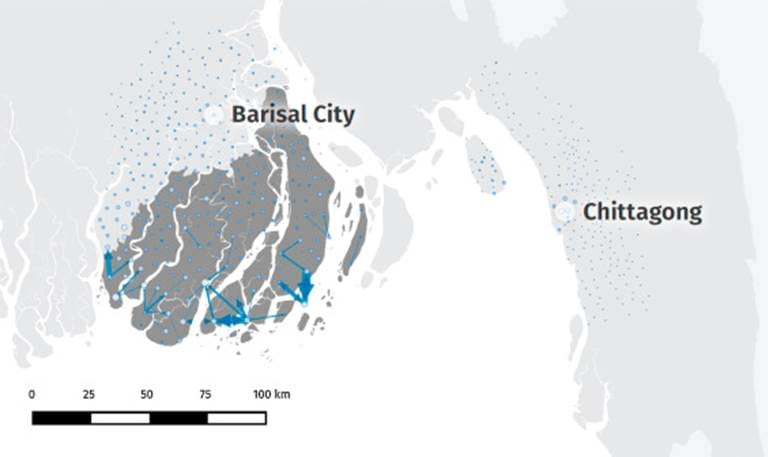By Xin Lu, David J Wrathall, Pål Roe Sundsøy, Md. Nadiruzzaman, Erik Wetter, Asif Iqbal, Taimur Qureshi, Andrew Tatem, Geoffrey Canright, Kenth Engø-Monsen, and Linus Bengtsson.
Climate change is likely to drive migration from environmentally stressed areas. However quantifying short and long-term movements across large areas is challenging due to difficulties in the collection of highly spatially and temporally resolved human mobility data. In this study we use two datasets of individual mobility trajectories from six million de-identified mobile phone users in Bangladesh over three months and two years respectively.
Using data collected during Cyclone Mahasen, which struck Bangladesh in May 2013, we show first how analyses based on mobile network data can describe important short-term features (hours–weeks) of human mobility during and after extreme weather events, which are extremely hard to quantify using standard survey based research. We then demonstrate how mobile data for the first time allow us to study the relationship between fundamental parameters of migration patterns on a national scale. We concurrently quantify incidence, direction, duration and seasonality of migration episodes in Bangladesh. While we show that changes in the incidence of migration episodes are highly correlated with changes in the duration of migration episodes, the correlation between in- and out-migration between areas is unexpectedly weak. The methodological framework described here provides an important addition to current methods in studies of human migration and climate change.
